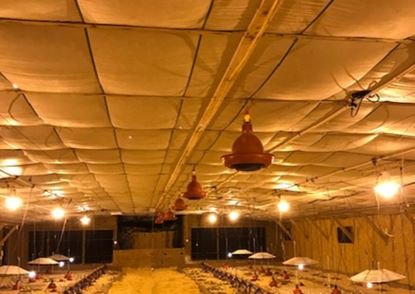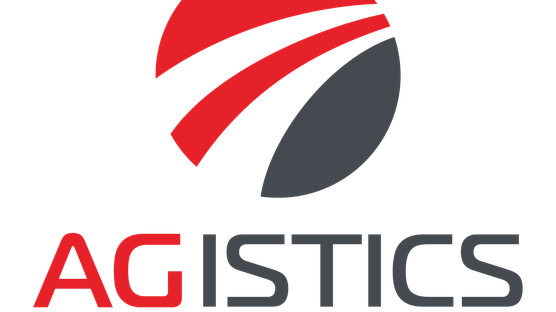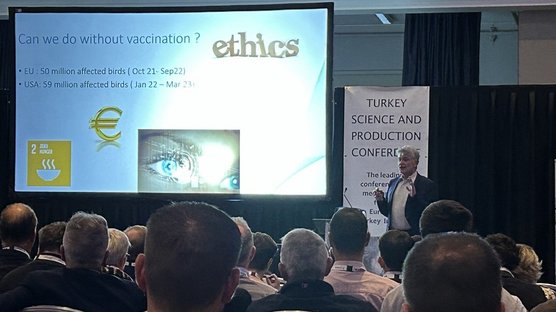
Published on Jan. 14, 2021
How to Perform a Successful HE Vaccination
Hemorrhagic Enteritis (HE) is an intestinal disease that causes challenges in turkey poults categorized by enlargement of the spleen, bloody diarrhea, and death. To offer enhanced protection against this disease, the industry regularly vaccinates for HE. Since the success of a vaccination is closely tied to the administration of the vaccine, this article suggests key points to follow for proper HE vaccination.
Background Information
The field strain of HE is found naturally in the environment. This is the strongest form of the disease and can hit when maternal antibodies for HE are low. A maternal antibody is an antibody transmitted from mother to fetus, or from hen to poult. As poults get older, their natural maternal antibodies for HE decrease. Birds that survive an initial infection can have weakened and damaged immune systems that can lead to secondary infections like E. Coli, resulting in increased mortality. This highlights the importance of vaccination to offer further protection.
There are two different types of HE vaccinations, Commercial and Splenic. The commercial vaccine is a cell cultured vaccine. The Splenic vaccine is manufactured from the spleens of turkeys infected with HE from a commercial vaccine. The Splenic vaccine is typically stronger than the commercial vaccine and is widely used in North America. Avoiding common issues that prevent a successful HE vaccination can help minimize secondary infections in your flock after vaccination.
Getting Started
Water Sanitation
Clean water is imperative to a successful HE vaccination process since this type of vaccine is administered through the water. Additionally, sanitized water helps to prevent challenges such as Bordetella, E-coli, Salmonella, and ORT. Water sanitation programs should begin before a flock arrives and continue throughout the life of the flock.
A good sanitation program begins with clean water lines. Ideally, the lines should be cleaned as soon as a flock is moved out of a house, and then again 24-48 hours before a new flock is placed. When cleaning the lines, without birds in the barn, a strong peroxide sanitizer is recommended. After the product is put through the lines, it should sit for about 24 hours and then be flushed thoroughly with a water sanitation solution. If water sanitation is done right, it should take only a few seconds to kill the microorganisms in the water lines. Water quality should be tested once per week to confirm the sanitation system is working correctly. Clean water helps to keep a flock healthy, and that is the goal when vaccinating for HE.
If measuring ORP, the levels should read 700-750 mV and the pH of the water should be between 5.5-6.5. If using chlorine dioxide, the goal is to have measurements between 6-10 ppm total chlorine and 3-5 ppm of free chlorine.
Special considerations: Auxiliary drinkers
If using auxiliary drinkers, you’ll want to sanitize them separately. Auxiliary drinkers tend to sit along the ceiling with water in them, not being used. This creates the potential for high loads of bacteria and biofilm to build. Therefore, these drinkers should have their own water line so you can run a strong peroxide sanitizer through them 24-48 hours before they are used. Be sure to flush these thoroughly before reintroducing them to the flock.

If drinkers are not properly cleaned and sanitized before the vaccine is administered, you are essentially vaccinating the birds with whatever is in the water lines, in addition to potentially rendering the HE vaccine ineffective.
Additional checks
Whether using a vaccination tank or a vaccination bucket, be sure they are properly cleaned before beginning the vaccination process.
If using a medicator to help administer the vaccine, check that it is working correctly, in advance of vaccine preparation, so the correct dose is given to the flock.
Vaccination Preparation – The night before vaccine administration
The HE vaccine must be kept frozen until the night before the vaccination, at which point it should be moved to a refrigerator to thaw.
It is important to note that when using the Splenic vaccine not to freeze and thaw multiple times because that can make the vaccine more potent.
Turn off water sanitation 10 hours before the vaccination is scheduled to be administered, so it doesn’t render the vaccine ineffective. Then run a vaccine stabilizer through the water lines overnight. It is helpful to have a clean bucket designated for vaccines so there is no contamination if you don’t have a vaccination tank. This bucket should also be used to run the vaccine stabilizer through the waterlines.
Day of Vaccination
At 6:00 am, turn off the water.
At 7:00 am, raise the water lines high enough so the birds can’t drink from them. Mix the vaccine in the vaccine bucket or vaccination tank with dye and the vaccine stabilizer. Mix enough solution to last 4-5 hours.
This can be calculated based on how much water the flock drank in that time range a day or two before, or by taking 40% of the amount of water consumed by the flock in a single day.
At 9:00 am (8:00 am in warm weather), flush the drinker lines until the dye comes out at the farthest point of the line.

It is recommended to flush lines one at a time to ensure all lines are completely flushed and no vaccine gets wasted. Shake the nipple lines so that the dye appears in all cups. If using bell drinkers, each should be dumped out until you see the dye. All water lines should be lowered at the same time and this action indicates the beginning of the vaccine administration.
The flock should be stirred every 15 minutes to encourage drinking. Walk them until the vaccine solution is completely distributed. Total distribution is confirmed when the vaccination tank or bucket is empty. Water sanitation can resume 1-2 hours after this occurs. After all the vaccine is administered, check the tongues of 100 birds for the dye to estimate the percentage of birds that successfully received the vaccine. The target is to have all 100 birds showing signs of being vaccinated (dye present).
Post Vaccination Check
It is important to bleed birds to check HE titers 21-28 days (3-4 weeks) after the vaccination to confirm vaccine effectiveness. The goal is a mean range of 6,000 – 11,000 titers with a CV of 30% or less. It is also important to evaluate the distribution of titers. Low titers, with values of 0 or 1, may indicate the flock was not properly vaccinated. Excessively high titers indicate there could have been a field challenge. Typically, if the vaccination was not done, or not done correctly, some HE challenges will appear, around 6-9 weeks of age, and may include elevated mortality. If excessive mortality is observed, then there was probably immunosuppression that allowed a secondary infection, like E-coli to affect the flock.
Summary
Successful HE vaccination is possible through a consistent water sanitation program, proper vaccine preparation, and following the recommended steps on the day of vaccination. Success means controlling costs, through reduced mortality, increased weight gain, improved feed efficiency, and in the end improved animal welfare. Contact your vaccine supplier to ensure you have the correct handling procedures for your vaccine and for all other questions on this topic contact a member of the Hybrid Turkeys Technical Service Team. Remember, all birds must drink for success!
Disclaimer: The recommendations in this article are based on successful implementation within North American turkey farms. For all other regions check with local regulatory guidelines before implementing the above recommendations to ensure compliance.



